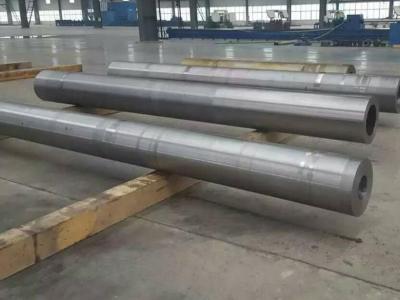Description
Scope of supply of Aviation Group:
Round rods, steel plates, non-standard forgings, rings, etc., welcome to inquire!
1. Introduction to W18Cr4V materials
W18Cr4V is a tungsten high-speed steel with high hardness, red hardness and high temperature hardness. Its heat treatment range is wide and its quenching is not easy to overheat, it is not easy to oxidize and decarbonize during the heat treatment process, and has good grinding processing performance. The hardness of the steel is maintained at HRC63-64 and HRC62-63 at 500°C and 600°C, respectively, and has good cutting performance for a large number of general materials to be processed. It belongs to Lairenite steel and is the most used high-speed steel. Like other high-speed steels, they are often called “white steel”, “front steel” or “wind steel” (can be quenched by air cooling).
2. W18Cr4V chemical components
| alloy | % | Chromium Cr | Stone Mo | Tungsten W | Vanadium V | Carbon C | Manganese Mn | Silicon Si | Phosphorus P | Sulfur S |
| W18cr4V | Minimum value | 3.8 | – | 17.0 | 1.0 | – | – | – | – | – |
| Maximum value | 4.4 | 0.30 | 19.0 | 1.4 | 0.70 | 0.40 | 0.40 | 0.030 | 0.010 |
3. Characteristics and characteristics of W18Cr4V material
In steel, carbon mainly forms carbides with chromium, tungsten, molybdenum and vanadium (the element of carbide formation) to improve hardness, wear resistance and red hardness. Tungsten is the main element that improves red hardness, and it forms carbides in steel. During heating, part of the carbide is dissolved into austenite, and after quenching, it forms martensite containing a large amount of tungsten and other alloy elements and has high tempering stability. During tempering, part of the tungsten dispersed and precipitated in the form of carbides, causing secondary hardening. During heating, the unsoluble carbides play a role in preventing the growth of austenite grains. Vanadium can significantly improve the red hardness, hardness and wear resistance of high-speed steel. When the carbide formed by vanadium is heated, partly dissolves into austenite, and when tempered, it disperses and precipitates with fine particles, causing secondary hardening and improving the red hardness of the steel. In high-speed steel, chromium mainly increases its hardenability, and can also improve the steel’s resistance to oxidation, decarbonization and corrosion resistance. Cobalt can also significantly improve the red hardness and hardness of steel.
When the cutting temperature is 540 degrees, the hardness can be maintained at HRC66;
At the cutting temperature of 600 degrees, the hardness can be maintained at HRC63.
Advantages: Strong versatility and mature process.
Disadvantages: Carbide segregation is severe, the thermoplasticity is low, and the tool hardness and red hardness cannot meet the processing of extremely hard and extra tough materials. The alloy element content is high and the cost is high.
4. W18Cr4V application field
W18Cr4V is a high-speed steel with a hardness of 62~65HRC. It is suitable for cutting tools such as twist anchors, broaches, tapping, milling, cutting, crimping and other areas with high hardness requirements.

